Duel on the Gojō Bridge: A Meeting We've Remembered for 900 Years
The Legend of the Two Warriors' Encounter

What happened next became a story that has spilled across nearly a thousand years of Japanese history, leaving behind works inspiring hundreds of generations from the medieval samurai wars in the form of stories and legends, through the slightly closer Edo and Meiji periods in the form of noh, kabuki theatre, and ukiyo-e prints, to today's video games, manga, and anime.
Let's go back to that afternoon on the bridge in Kyoto, nearly 900 years back, and see what happened then...
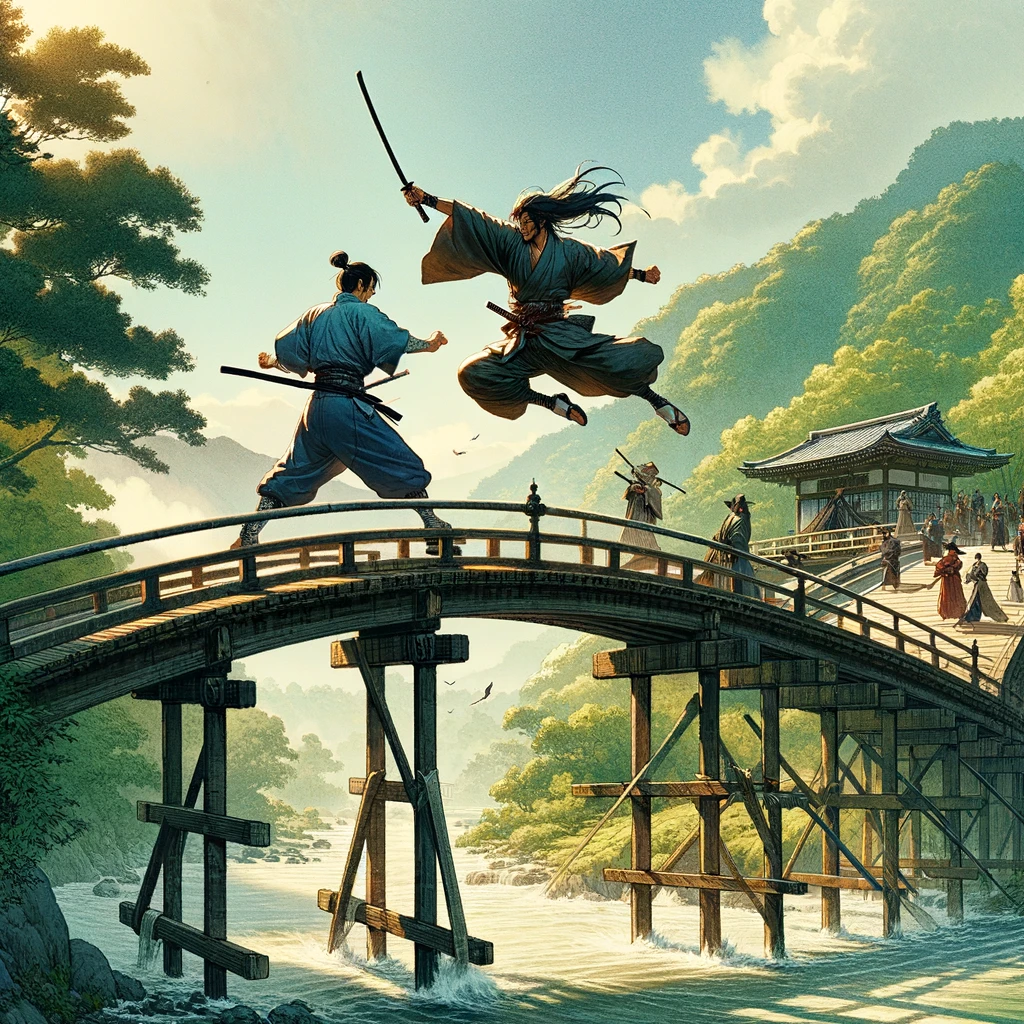
Its universal message and timeless themes reflect key aspects of the Japanese spirit and identity, while also offering insight into the life and customs of the era in which it was born. Thus, the story of Ushiwakamaru and Benkei on the Gojō Bridge is not only a key element of Japanese cultural heritage but also a source of inspiration for contemporary narratives, emphasizing the universal quest for meaning, strength, and true friendship.
Main Characters
Benkei (弁慶, "Strong and Wise")

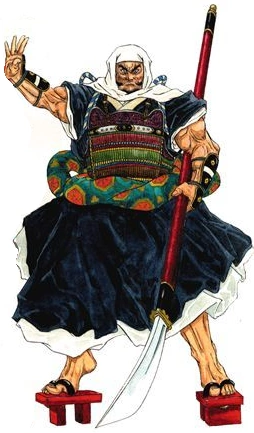
Benkei remains in memory as an example of loyalty, courage, and character strength. His story, full of heroism and sacrifice, not only inspired numerous generations of Japanese but also contributed to shaping the image of the ideal warrior in Japanese culture. His legend, alive in literature, art, and folk tales, continues to fascinate and inspire, being a testament to universal values such as honor, loyalty, and the pursuit of excellence.
Ushiwakamaru (牛若丸, "Young Bull")


His remarkable agility, intelligence, and martial skills quickly earned him fame as one of the most outstanding samurais of his time. Stories of his heroism and war strategy, including the famous battle of Dannoura, which sealed the downfall of the Taira clan, are an important part of Japanese cultural heritage. Ushiwakamaru's youth and training highlight not only his physical and mental preparation for future challenges but also the deep spirituality and connection with nature that were important in his life and legend.
Gojō Bridge (五条橋, "Fifth Bridge")


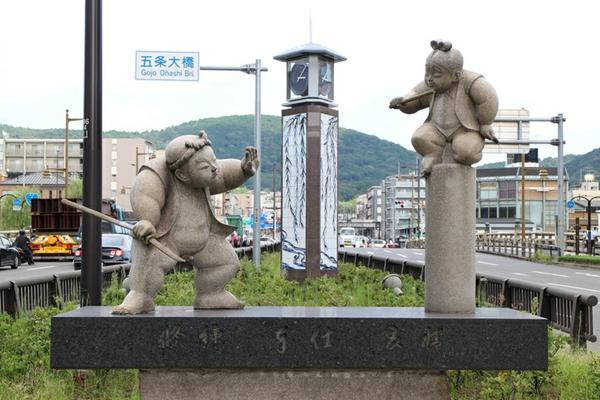
The stage is thus set – we have the heroes, we have the place of the event. Let's see what happens when these two warriors stand opposite each other on the Fifth Bridge of Kyoto.
The Legend of the Meeting on the Gojō Bridge

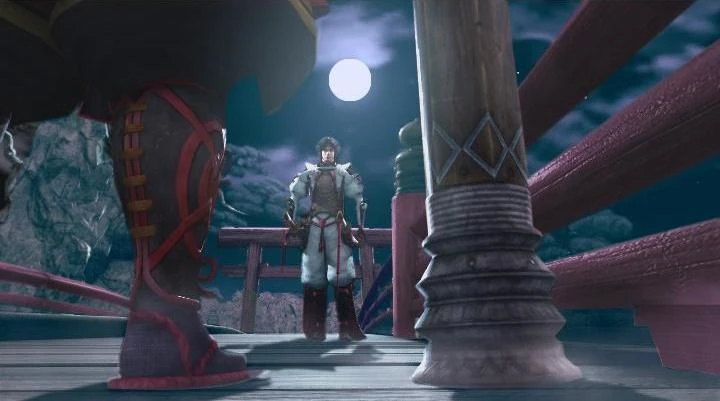

For Ushiwakamaru, this meeting was a test not only of his fencing skills but also of the deeper knowledge he had gained from the Tengu, mysterious mountain creatures known for their mastery of martial arts. Raised on Mount Kurama, Ushiwakamaru was subjected to rigorous training by the Tengu king, Sojobo. From him, he learned not only swordsmanship techniques but also strategy, tactics, and, most importantly, how movement and perception can be utilized in combat.

As the duel gained momentum, and both warriors exchanged blows, Benkei, astonished by Ushiwakamaru's agility, exclaimed: "How is it possible that you avoid my attacks so easily? Your moves... it's as if you're dancing with the wind!"
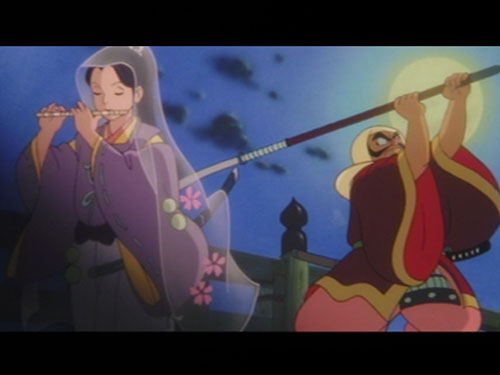
It is said that Ushiwakamaru was able to move at a speed that surpassed human capabilities, a result of understanding "ki" - the life energy, the secrets of which he uncovered thanks to the Tengu. With every attack Benkei directed at him, the young samurai gracefully evaded the strikes, simultaneously finding opportunities to deliver quick, decisive blows. In one of the duel's key moments, when Benkei tried to surprise Ushiwakamaru with a powerful swing of his great sword, Ushiwakamaru, with incredible agility, jumped over the blade, landing behind the warrior monk and placing the edge of his sword on his neck.


Ushiwakamaru, helping Benkei to stand, said: "Together, we can strive for greater strength - not through domination, but through understanding and cooperation. Your courage and strength will be valuable allies to me."
This meeting on the Gojō Bridge not only initiated the legendary friendship between Ushiwakamaru and Benkei but also became a symbol of character strength, wisdom, and honor, surpassing raw physical force. In this way, the legend conveys values that are deeply rooted in Japanese tradition and culture, teaching generations the importance of true strength and friendship.
The Further Life of the Legend in Japanese Culture
 First Mentions and Sources
First Mentions and Sources
The first written traces of the story of Ushiwakamaru and Benkei can be found in works from the Kamakura period, specifically in "Gikeiki" (義経記, "The Chronicles of Yoshitsune"), which detail the life and adventures of Yoshitsune, including his meeting with Benkei. "Gikeiki," though written several centuries after the lives of its protagonists, became the foundation for further interpretations of this story, influencing Japanese culture and society for centuries."
The Influence of the Tale of the Meeting on the Bridge
This story has inspired countless literary works, theatrical plays, and visual arts, becoming a symbol of honor, loyalty, and mastery in martial arts. It conveys values close to bushido (the samurai code), which shaped feudal Japanese society and continues to have a strong influence in contemporary Japanese culture. Adaptations in Art and Literature
Ukiyo-e (浮世絵, "Pictures of the Floating World")
This legend found its reflection in the Japanese art of ukiyo-e woodblock printing, which flourished during the Edo period (1603–1868). Artists such as Utagawa Kuniyoshi (歌川 国芳) created series of prints depicting dramatic scenes from the lives of Yoshitsune and Benkei, capturing them at key moments of their legendary adventures. These visual interpretations not only allowed a broader audience to acquaint themselves with the story but also contributed to its mythologization.
 Traditional Noh (能, "Skill") and Kabuki (歌舞伎 – "The Art of Singing and Dancing") Theater
Traditional Noh (能, "Skill") and Kabuki (歌舞伎 – "The Art of Singing and Dancing") Theater
In noh theater, the story of Ushiwakamaru and Benkei is reflected in plays such as "Ataka" and "Benkei on the Bridge," where the dramatic and often mystical aspects of their meeting are presented using symbolic gestures and masks. These plays, created by noh masters like Zeami Motokiyo, explore the deep emotional and spiritual dimensions of the characters, revealing their inner conflicts and transformations. Meanwhile, in kabuki theater, a dynamic and colorful adaptation of this story finds its place in performances like "Yoshitsune Senbon Zakura" (義経千本桜, "Yoshitsune and the Thousand Cherry Trees"), authored by Takeda Izumo, Miyoshi Shōraku, and Namiki Senryū. This play, one of the most famous in the kabuki repertoire, not only portrays the meeting between Ushiwakamaru and Benkei but also other adventures of Yoshitsune, combining historical elements with legendary ones into a complex story full of action, drama, and spectacular battle scenes. "Yoshitsune Senbon Zakura" attracts audiences not just with its story but also with advanced stage techniques and impressive costumes, making it one of the most captivating performances on the kabuki stage, conveying the legend of Yoshitsune and Benkei to subsequent generations.
 Other Literary Forms
Other Literary Forms
The tale of Ushiwakamaru and Benkei has also been adapted into modern novels, stories, and poems, exploring various aspects of their relationship, from their first meeting to the numerous adventures they shared. These literary adaptations, written by authors such as Yoshikawa Eiji in his famous novel "Musashi," continue to inspire and fascinate readers, highlighting the universal values contained in the legend.
Over the centuries, this story has been and continues to be reinterpreted in various forms, maintaining its place as one of the most influential tales in Japanese culture, serving as a source of inspiration for artists, writers, and cultural creators.
 Films and Series
Films and Series
"Yoshitsune" (2005) - A Japanese TV series broadcast by NHK as part of the Taiga Drama series. It tells the life of Minamoto no Yoshitsune, showcasing his relationships with Benkei and their shared adventures. The series focuses on the dramatic events of Yoshitsune's life, depicting his heroism and tragedy.
"Gojoe: Spirit War Chronicle" (2000) - A Japanese action film directed by Sogo Ishii. Although not a direct adaptation of the legend of Ushiwakamaru and Benkei, the film draws from similar historical and legendary motifs, presenting an epic battle for the Gojoe Bridge in Kyoto. The film mixes historical elements with fantasy, creating a unique interpretation of Japanese legends.
Anime and Video Games

"Fate/Grand Order" (2015) - Originally a mobile game, it has been adapted into manga and anime. Ushiwakamaru and Benkei appear as "Servant" characters that players can use. Their stories and characters are developed in line with legendary motifs, presenting them in a modern fantasy context.
"Genpei Tōma Den" (1986) - A classic arcade and PC Engine console game that tells the story of the Genpei War, a key conflict in Japanese history in which Yoshitsune participated. The game is one of the first examples where characters inspired by Yoshitsune and Benkei appear in video game culture. Players take control of a samurai, traversing various levels and fighting enemies in a side-scrolling action style.
Mastery and Loyalty


The tale of Ushiwakamaru and Benkei reminds us of the importance of the concept of honor in daily life and interpersonal relationships. It is a reminder that despite changing times and contexts, the fundamental values that define our humanity remain unchanged. By continually telling this story, both in Japan and around the world, we pass on to future generations patterns of behavior that have the power to shape characters and inspire being better versions of oneself. In this way, the legend of the meeting on the Gojō Bridge continues to live, bringing with it the hope that the values we cherish will withstand the test of time.
>>SEE SIMILAR ARTICLES:
Ninja Among Samurai: Following the Shadow Path of Ninjutsu with Hattori Hanzo
Kachi-kachi Yama: The Rabbit vs Tanuki, A Tale of Murder and Torture
The Enduring Legacy of the Bushido Code and Modern Samurai Clans
Sword Master and Wordsmith Miyamoto Musashi: Samurai, Artist, and Philosopher
Tomoe Gozen, the Samurai Woman: 'A Warrior Worth a Thousand, Ready to Face a Demon or a God'
"Strong Japanese Women"
see book by the author
of the page
未開 ソビエライ
An enthusiast of Asian culture with a deep appreciation for the diverse philosophies of the world. By education, a psychologist and philologist specializing in Korean studies. At heart, a programmer (primarily for Android) and a passionate technology enthusiast, as well as a practitioner of Zen and mono no aware. In moments of tranquility, adheres to a disciplined lifestyle, firmly believing that perseverance, continuous personal growth, and dedication to one's passions are the wisest paths in life. Author of the book "Strong Women of Japan" (>>see more)
Personal motto:
"The most powerful force in the universe is compound interest." - Albert Einstein (probably)
Mike Soray
(aka Michał Sobieraj)
未開 ソビエライ
An enthusiast of Asian culture with a deep appreciation for the diverse philosophies of the world. By education, a psychologist and philologist specializing in Korean studies. At heart, a programmer (primarily for Android) and a passionate technology enthusiast, as well as a practitioner of Zen and mono no aware. In moments of tranquility, adheres to a disciplined lifestyle, firmly believing that perseverance, continuous personal growth, and dedication to one's passions are the wisest paths in life. Author of the book "Strong Women of Japan" (>>see more)
Personal motto:
"The most powerful force in the universe is compound interest." - Albert Einstein (probably)
Mike Soray
(aka Michał Sobieraj)
Write us...
Ciechanów, Polska
dr.imyon@gmail.com
___________________
inari.smart
Would you like to share your thoughts or feedback about our website or app? Leave us a message, and we’ll get back to you quickly. We value your perspective!




 First Mentions and Sources
First Mentions and Sources
 Traditional Noh (能, "Skill") and Kabuki (歌舞伎 – "The Art of Singing and Dancing") Theater
Traditional Noh (能, "Skill") and Kabuki (歌舞伎 – "The Art of Singing and Dancing") Theater Other Literary Forms
Other Literary Forms Films and Series
Films and Series
